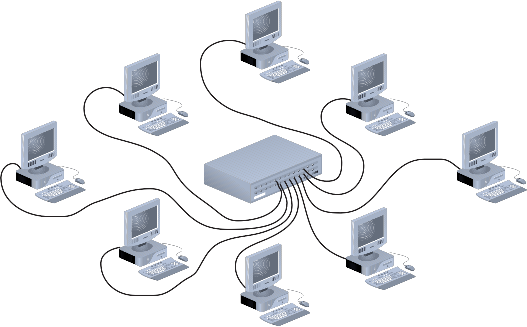What Is Star Topology? Advantages And Disadvantages Of A Star Topology

 Short Bytes: Star Topology is the most commonly used network topology. Well, it has got some advantages/disadvantages and it’s the next topic we are discussing in our network tutorial guide. Know and learn more about the star topology.
Short Bytes: Star Topology is the most commonly used network topology. Well, it has got some advantages/disadvantages and it’s the next topic we are discussing in our network tutorial guide. Know and learn more about the star topology.
What is Star Topology?
A star topology is a network topology in which all the network nodes are individually connected to a central switch, hub or computer which acts as a central point of communication to pass on the messages.
In a star topology, there are different nodes called hosts and there is a central point of communication called server or hub. Each host or computer is individually connected to the central hub. We can also term the server as the root and peripheral hosts as the leaves.
In this topology, if nodes want to communicate with a central node, then they pass on the message to the central server and the central server forwards their messages to the different nodes. Thus, they form a topology like the representation of a star.
How does communication happen in a Star topology?
Let’s say all the computers of a floor are connected to a common hub or switch. The switch maintains a CAM table in this case. The CAM table is Content Addressable Memory where hardware addresses of the all the connected devices are stored inside a memory in the switch.
For example, if computer A wants to send a data packet to computer B then computer A will forward the message to the switch. The switch will check the address of the destination computer and forward the message to the same.
In the case of a hub, a hub has no memory of its own. So when computer A sends a message to computer B, then hub announces “Hello all the ports connected to me, I have got a packet for this address. Who of you has this address?” This procedure is called ARP (Address Resolution Protocol) and using this network protocol the hub is able to find the address of the intended machine and hence, it transfers the packet to the destination machine.
Advantages of Star Topology:
- Less damage in case of a single computer failure as it does not affect the entire network
Disadvantages of Star topology:
- More cables are required to be connected because each computer individually connects to the central server
- Single point of failure in case the server get down.
You’ll find these interesting:






